Open Office 3: Real Competition for Microsoft?
In olden days (alternate opening: "Once upon a time") there were word processors, spreadsheets, and database programs. Each was a separate application and users could select the "best of breed". Then came the suites and, when you bought a word processor, you got a spreadsheet program, maybe a database program, and possibly a presentation program. Microsoft gained dominance even though Wordperfect and Lotus managed to maintain a small market share. The latest version of Open Office may modify the equation.
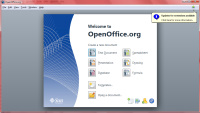 Open Office doesn't have the advanced features of Office 2007 or Wordperfect Office Suite X4, or even the features of previous versions, but it does have one large advantage, particularly in tough economic times: It's free. Open Office is the free version of Sun's Star Office and Open Office may be all you need if all you need is basic word processing, basic spreadsheet, and basic presentation functionality.
Open Office doesn't have the advanced features of Office 2007 or Wordperfect Office Suite X4, or even the features of previous versions, but it does have one large advantage, particularly in tough economic times: It's free. Open Office is the free version of Sun's Star Office and Open Office may be all you need if all you need is basic word processing, basic spreadsheet, and basic presentation functionality.
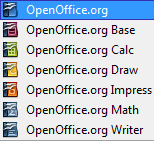 I didn't mention database management. That's because the Open Office database function is severely lacking. If you need a robust data management system, you'll need either Access (a part of the Microsoft Office Suite), Paradox (which comes with the professional version of Corel's Wordperfect Office Suite), or the free open-source MySQL with a free open-source front end. Don't try to perform serious data management functions with Open Office Base.
I didn't mention database management. That's because the Open Office database function is severely lacking. If you need a robust data management system, you'll need either Access (a part of the Microsoft Office Suite), Paradox (which comes with the professional version of Corel's Wordperfect Office Suite), or the free open-source MySQL with a free open-source front end. Don't try to perform serious data management functions with Open Office Base.
OO3 Covers the Basics
Writer, Calc, and Impress are the word processor, spreadsheet, and presentation program parts of the suite. Base, Draw, and Math are the weaker parts of the suite that provide limited database management, vector-based drawing, and the ability to create mathematical formulae.
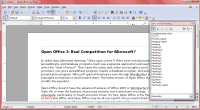 Writer
Writer
The word processor application looks a lot like Microsoft Word 2003, but offers one of Word 2007's important new features: The ability to save a document in PDF format. Writer can also read and write Word 2007 files as well as files in other word processor formats.
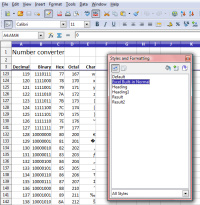 Calc
Calc
The spreadsheet program can read and write Microsoft Excel (xlsx) documents. In the example shown here, we have a sheet that shows a decimal number in the first column, the equivalent binary, hex, and octal values in the next 3 columns and then the printing character that value creates in the final column.
 Oops
Oops
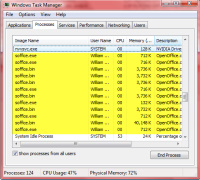 When I tried to open a database file, Open Office crashed. The crash took down not only Base but also Writer. Fortunately, Open Office offered to recover both files.
When I tried to open a database file, Open Office crashed. The crash took down not only Base but also Writer. Fortunately, Open Office offered to recover both files.
I then tried to start Base several times, but the application never opened. When I looked at the Task Manager, I noticed a dozen Open Office processes running. After killing each of those processes, I was able to open new sessions.
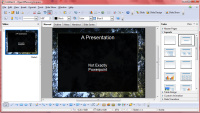 Impress
Impress
As with most of the other components of Open Office, whether Impress will suffice depends on your presentation needs. Those whose needs are basic and who don't need to create presentations that are fully compatible with Powerpoint will find Impress to be more than adequate. If you need Powerpoint's functions, though, you're going to need Powerpoint.
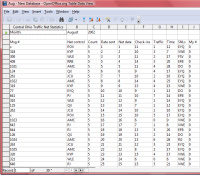 Base
Base
Base is the weakest component of the suite, primarily because reporting is so limited. Unlike other database programs that have built-in reporting functions, Base reports are essentially mail-merge functions that employ Writer. Reports are difficult to create and this seriously limits Base's usability: When trapped inside a database, information is essentially useless.
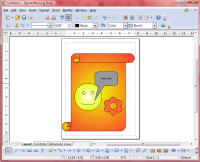 Draw
Draw
Microsoft doesn't provide a vector-art application as part of the office suite, so Draw is essentially an effort to recreate Corel Draw. In this regard, it falls far short of the mark. Still, for basic office graphics, Draw could be sufficient.
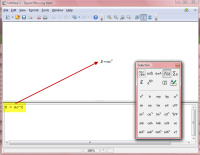 Math
Math
The ability to create math functions is built in to Microsoft Word, but Open Office makes it a separate module. The result is the same: The user specifies codes that are then interpreted and represented as a formula. Whether the function is built in or separate makes little difference.
The Good, the Bad
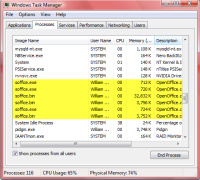
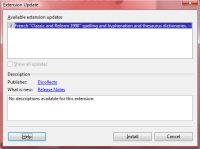 As with many applications today, Open Office is capable of checking for updates and suggesting that you install them (right). But crashes that take down multiple components of the suite while leaving processes running can leave a sour aftertaste (left).
As with many applications today, Open Office is capable of checking for updates and suggesting that you install them (right). But crashes that take down multiple components of the suite while leaving processes running can leave a sour aftertaste (left).
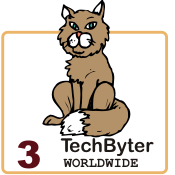 Bottom line: It's free and it works most of the time.
Bottom line: It's free and it works most of the time.
Open Office 3 represents a significant upgrade from version 2, but it fails to provide the ease of use and extensive functionality that Microsoft's Office Suite does. Open Office is a good solution for those who have basic needs and who don't mind dealing with relatively frequent crashes.
For more information, visit the Open Office website.
Thanks for the Memories
Does anyone not own a USB thumb drive today? In 2001 I wrote about being introduced to the "Disk on Key" at PC Expo in New York City. The drive stored an astonishing 16MB of data and cost "only" $70. A smaller 8MB drive was available for $50. The company that made Disk on Key is no longer in business and PC Expo expired following the Internet commerce meltdown of 2000 and the terrorist attacks of 2001, but today you can buy a 16GB drive for about $20.
 I carry 6GB worth of storage in my pocket every day in the form of 3 2GB thumb drives. But when I saw an offer on Woot.com for a name-brand 16GB drive that would cost less than $25 (shipping included) I had to have one.
I carry 6GB worth of storage in my pocket every day in the form of 3 2GB thumb drives. But when I saw an offer on Woot.com for a name-brand 16GB drive that would cost less than $25 (shipping included) I had to have one.
To put this in perspective, a 6-page letter to a friend in Russia consumes about 20KB as a Word file on my computer's hard drive. So that's about 3.3KB per page. That means my new 16GB thumb drive would easily hold nearly 5 million pages of text.
As one who remembers when a 40MB disk drive was about 2/3ds the size of a washing machine and when 64KB of core memory fit in a compartment that was about 6 inches wide, 18 inches deep, and 24 inches tall, I find the ability to store 16GB of data in a device that could easily be concealed in a sock little short of amazing.

The cost of memory has dropped by 99.975% between 2001 and 2008.
Here's another memory offer from this week. You pay more for shipping than for the 2GB of memory:
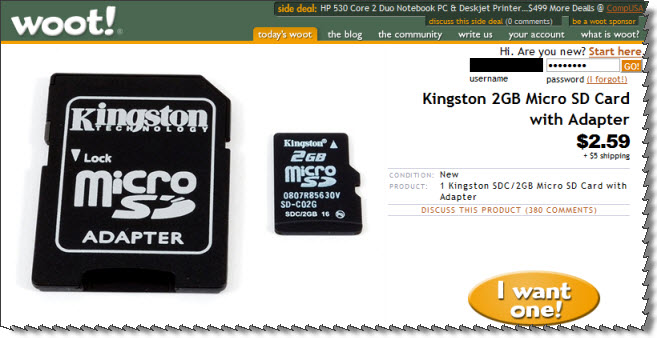
These USB devices make it possible for anyone to take large amounts of work home. But if you're an IT security professional, they probably frighten you. In less than a minute a disgruntled worker could download the entire company's list of clients to a thumb drive that could then be taken past security guards who wouldn't even notice it.
Election 2008 (And I'll Keep it Non-Political)
You probably know that I've been a poll worker for several years. The 2008 general election was unusual by anyone’s standards because so many people voted absentee or at early polling locations. Most of those who voted on election day came to the polls early in the morning and many polling places were empty during the afternoon and evening. For the first time in years, all polling places in Ohio closed at or shortly after the expected closing time. I can't tell you about all precincts, but I can tell you about one 3-precinct location in central Ohio. And that’s as close as I'm going to come to telling you the location.
Sunday before the election, I picked up voting supplies from the board of election warehouse: Poll books, certain supplies, phones, and a supplemental list of absentee voters that had requested absentee ballots after the books had been printed. That afternoon, I spread the materials out on a large table at the Worthington Library and marked voters on the supplemental list “AB/PROV” in the poll books. This is done to avoid double voting; anyone who requested an absentee ballot must vote a provisional ballot if that voter comes to the polls.
Twenty percent or more of voters had voted early. Probably quite a bit more.
Multiple precincts voting at a single location are all managed by a single “location manager” instead of 3 “presiding judges”. On Monday, I visited my 3 precincts and found only 2 equipment carts instead of 3. The board of elections confirmed that some equipment had been reassigned to locations where they thought the need would be greater.
On Election Day, I arrived at 5 am and the other 17 poll workers showed up by 5:30. The Ohio Secretary of State says poll workers need to be in place by 6 for a 6:30 opening, but the Franklin County board of Elections mandates 5:30. One voter was in line at 5:30. This was an omen.
At 6:30, we opened with all 8 voting machines operational and a long line of people waiting to use them. Until 9 am, the situation was controlled chaos, with emphasis on chaos. People were annoyed because they had to wait (in some cases, voting took 90 minutes) and we were always giving “the other line” preferential treatment.
This year the Secretary of State mandated an announcement about the option to use paper ballots whenever more than 20 voters were in line. I made the announcement several times during the morning and we processed about 150 paper ballots even though we had only 3 privacy booths. If the voter was willing to use just a clipboard to vote without benefit of the privacy booth, we allowed it. Occasionally half a dozen or more people were voting paper ballots and that helped slowly reduce the line.
By 9 am, the line that once reached back through the school hallway, out the door, and to the parking lot, reached only to the doors of the gymnasium. By noon, there was only a short line and the wait to vote was less than 10 minutes. By 3 pm, there was no line at all and some of the voting machines were occasionally vacant.
After that, we rarely saw more than an occasional voter until 7:30 in the evening.
During the day, the Obama campaign’s observer was inside the polling location several times to check voter lists that are posted at 6:30, 11, and 4 to show who has already voted. Campaigns may use these lists to contact voters who haven’t yet voted. Clearly, though, most of the voting was over by noon.
In addition to the early and absentee voters, 887 voters cast ballots on Election Day in the 3 precincts I’m responsible for. In the primary, I believe the count was less than 300 and with only a few absentee ballots. Based solely on observation of the poll books, it appears that 90% of eligible voters in the 3 precincts cast ballots in early voting, via absentee voting, or in person.
Assistance from High School Seniors
A “Youth at the Booth” program brings high school seniors in, usually as machine judges, and this year’s half-dozen seniors were remarkable. If a voter leaves a machine before taking a final step to confirm their vote and we don’t catch the voter, we must to cancel the vote. This is a shame because we are discarding the vote of someone who has taken the time to come to the polling location, stand in line, and do everything necessary except for clicking the final “confirm” button. If we can catch the voter, we can save the vote and this year’s group of seniors caught every single fleeing voter. We recorded every vote!
I am proud of these students. It’s an honor to work with them. If you know any students who are interested in government and the board of elections in your area has similar program, encourage them to participate.
Mechanics and Curbside Voting
During the primary, we had about a dozen voting machines, but some were out of service, sometimes for an hour or more. This time we had far more voters and far fewer machines, but they all worked flawlessly and the technician responsible for our machines said that none of the machines in his area had serious problems and only a few experienced minor problems.
Starting this year, Ohio offered curbside voting for anyone who is too ill to come inside and stand in line. The daughter of a man who was returning home following cancer surgery asked for that service. The roster judge brought the appropriate book outside with the man’s daughter, a Republican judge, and me. After the voter signed the poll book, the roster judge returned with it to continue signing other voters in. I obtained the proper ballot, and gave it to the man’s daughter, then the other judge and I stood by while the couple filled out the ballot. Then the woman returned with us to the paper-ballot judge, placed the ballot in a privacy envelope, and dropped it into the ballot box.
Electioneering in the Polling Place and Phone Calls from the Board
One first-time voter had a tiny Obama button on his hat. The greeter didn’t notice it. The roster judge didn’t notice it. The machine judge didn’t notice it. I spotted it only as he was leaving the room. That shouldn’t have happened, but the button was so small that apparently nobody was influenced by it. We spot a few other people with small buttons or stickers and they were all understanding when we explained that they needed to remove the political materials because Ohio law specifies that polling locations must be neutral.
During the day, the board of elections called with reminders and with two policy changes from the Secretary of State. When the board hears more than an occasional report of something being mishandled, they call every precinct using an automated system; this year’s board reminders were all minor technical issues.
The two policy changes from the Secretary of State were equally minor and neither affected any of our voters. For example, we were advised that we could accept as valid identification an expired Ohio driver’s license if the address on the license was the same as that in the poll book. This is a common-sense approach that should have been policy from the outset.
Closing the Polls
Closing the machines, collecting the data storage devices, printing two copies of a results tape, finishing the paperwork, and locking the machines into their carts took about an hour. At 8:30, I was the driver of one of more than 500 cars that converged on the Franklin County Board of Elections warehouse, a drive-through facility. By 9:30, I had returned to the school and dropped off the Republican judge who accompanied me to the warehouse. By 10, I was home.
During our drive to the warehouse, NPR reported that the Ohio Secretary of State would release no information about voting in Ohio until all voters had voted statewide. Any voters in line at 7:30 are allowed to vote and sometimes that has kept some locations open until well after midnight. Apparently all polls closed at or shortly after 7:30 because information quickly began to flow.
The Political Part
This is where the political comment would go, if I would make it. I won’t. But I will say this: Speeches by both candidates on the night of the election seemed to go beyond the usual in reaching out to each other. John McCain’s talk was eloquent and inclusive. Being an optimist, I hope that we can all begin to work across the divide to solve this nation’s pressing problems.
Nerdly News
Notice a Big Drop in Spam This Week?
It was like somebody flipped a switch and turned off all the spam on Tuesday of last week. Where I might expect to see hundreds of spams, there were 4 or 5. Sometimes I would go for an hour or more without seeing any spam. I was beginning to think nobody loved me, but then I found the truth.
It won't last. By Thursday, the trend was already heading up again. If only the stock market could recover as quickly as a spammer.
Several Internet providers, working together, shut down a San Jose hosting service called McColo. This one operation is alleged to have been responsible for more than 60% of the spam sent from the United States. The spammers will, of course, just move elsewhere. But maybe the Internet providers will keep the pressure on. The good guys may never be able to win the war, but at least they can make life more difficult for spammers and fraudsters.
Computerworld Magazine says an average of 190 billion spam messages were sent daily during October, but the level dropped to 112 billion as of Tuesday morning when McColo was cut off at the knees. Back in September, another spam operation was shut down, but spam levels bounced back within a few weeks.
If nothing else, the pause was certainly one that refreshed. And, in case you're wondering who to thank, send a note to Washington Post reporter Brian Krebs, who gathered much of the evidence.
Did You Send Microsoft a Birthday Card?
Windows is 25. It was November 1983 when Bill Gates announced Windows 1.0 in New York City. It would give PCs a new easy-to-use face, said Gates, and would allows PCs to run more than one application at a single time. Remember the days of DOS? If you didn't use a special utility such as QEMM, you could run just one program at a time.
It didn't run more than one application at a time very well, though, and neither did version 2 of Windows, both of which came with runtime versions so that DOS-lovers such as me could continue running DOS and launch the Windows runtime only when needed to run a Windows application such as Pagemaker. Other graphic programs such as Ventura Publisher ran under the GEM operating environment.
What has changed in 25 years? Windows does a lot more these days, but Windows is a lot like Bill Clinton: Always late. Although announced in 1983, Windows 1.0 didn't ship until November 1985. So it is really 25 years old this year or just 23? I guess that depends on your definition of "operating system" and "vaporware".
Microsoft had started working on what it called the Interface Manager in 1981, but Windows faced competition in the marketplace. Apple had released the far too expensive and underpowered Lisa, which eventually led to the Macintosh. Digital's GEM interface had a sizeable following. And Quarterdeck had enhanced QEMM to be multi-tasking DOS-based system called DESQView.
Windows 1.0 shipped with several applications: The MS-DOS Window, Calendar, Cardfile, Notepad, Clipboard, Terminal, Calculator, Reversi, Windows Write, and Windows Paint. When Windows 7 ships next year (if Windows 7 ships next year), it will come with a command window, Notepad, Clipboard, Calculator, Solitaire, Windows Write, and Windows Paint.
Some things just never change.
The Weekly Podcast
Podcasts are usually in place no later than 9am (Eastern time) on the date of the program. The podcast that corresponds to this program is below. The most recent complete podcast is always located here.
Search this site: Looking for something you remember hearing about on TechByter Worldwide? Search me.
Subscribe to the newsletter: Subscribing to the podcast: I recommend Apple's Itunes for podcasts. Itunes will also install the latest version of QuickTime. The program is free. Need instructions?
Privacy Guarantee: I will not sell, rent, loan, auction, trade, or do anything else with your e-mail address. Period.
How the cat rating scale works.
Do you use a pop-up blocker? If so, please read this.
The author's image: It's that photo over at the right. This explains why TechByter Worldwide was never on television, doesn't it?
Feed the kitty: That's one of them on the left. Creating the information for each week's TechByter requires many hours of unpaid work. If you find the information helpful, please consider a contribution. (Think "NPR".)


